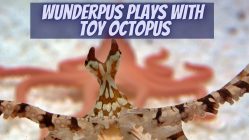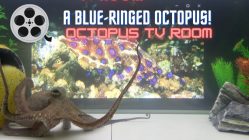
Even though there are references to the Argonaut Octopus dating from Ancient Greece, this species is still considered a very big enigma as little is known about the Argonaut behaviour, physical characteristics, and its distribution. The mystery surrounding these octopuses is intensified by their other-worldly beauty.
What makes the Argonaut species truly unique is that, unlike other octopus species that crawl on the sea floor, the Argonauts drift near the surface of the sea, using their shells as small floating boats.
Argonaut Octopus Facts
- Scientific Name : Argonauta Argo
- Common Name: Argonaut or Paper Nautilus
- Size: Females up to 10 cm (shells up to 30 cm), males 2 cm
- Weight: 25 – 30 grams
- Lifespan: 1 years
- Found in: Tropical and Subtropical waters worldwide
- Sub-Order: Incirrina
- Discovered: 1758
- Scientific Name : Argonauta Argo
- Common Name: Argonaut or Paper Nautilus
- Size: Females up to 10 cm (shells up to 30 cm), males 2 cm
- Weight: 25 – 30 grams
- Lifespan: 1 years
- Found in: Tropical and Subtropical waters worldwide
- Sub-Order: Incirrina
- Discovered: 1758
What makes the Argonaut species truly unique is that, unlike other octopus species that crawl on the sea floor, the Argonauts drift near the surface of the sea, using their shells as small floating boats.
—Extinct or Extant?—
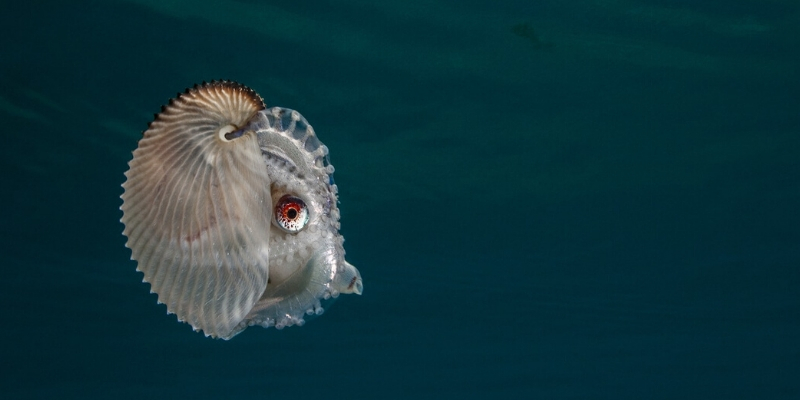
Before we proceed to the description of these amazing creatures, we need to clarify some points regarding their taxonomy. The term taxonomy in biology refers to the classification of organisms and their division to different species. The scientific name Argonauta actually describes the genus of several octopus species. As little is known for this family of octopuses, we will refer to it as Argonauts in order to facilitate our readers.
The genus Argonauta was originally mentioned by the famous Swedish zoologist Carl Linnaeus, who is considered the father of modern taxonomy, in 1758. This genus consists of 13 different species. Of these 13 species, 6 are declared as extinct, 5 are considered extant, and 2 are considered of questionable status. In cases such as the genus Argonauta it becomes very difficult for taxonomers to distinguish between extinct and extant species, or between species with similar characteristics but different names. Sometimes a species which was considered extinct reappears and other times two species with different names turn out to have no distinguishing differences in their physical attributes. For example, the species known as Argonauta cornuta, one of the rarest Argonaut species with a limited distribution might be actually the same as the species Argonauta hians which is a species with many variations as it is found all over the world. The same is true for the equally rare Argonauta Pacifica species.
—The Argonaut Octopus in Culture—
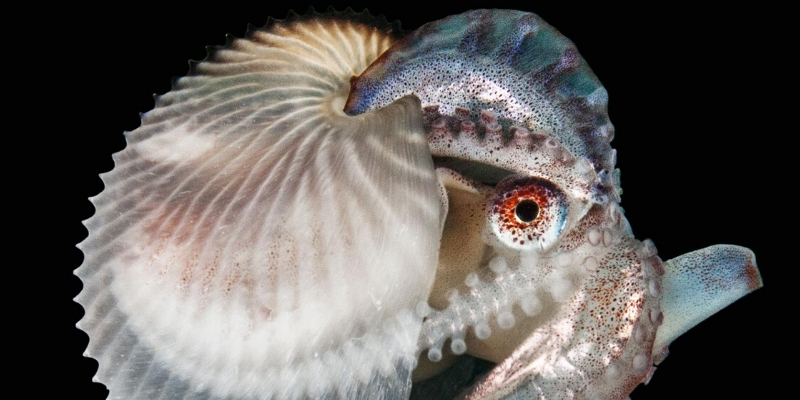
The Argonaut Octopus has been very popular throughout the course of history, although the male Argonaut, due to its smaller size, has only been recognized in the last 165 years. The name of the genus alludes to the ancient Greek myth of Jason and his Argonauts. Argonauts translates as the sailors of Argo, which was the name of Jason’s ship.
As early as 300 B.C., Aristotle uses the name to refer to this family of octopuses. He describes how the females of the species use their shells as boats. According to him, the octopus hides in its floating shell and sails its little boat using her arms as oars. This image of a sailing octopus was later on borrowed by Jules Verne who mentions the Argonauts in his Twenty Thousand Leagues Under the Sea. Moreover, The Swiss Family Robinson managed to capture the ”small nautilus, a sort of shell-fish which much resembles a miniature gondola”.
The Argonaut Octopus has also inspired many classical and modern artists who use its form as a decorative element in painting, pottery, architecture, or even jewelry-making.
—The Shell or Eggcase—
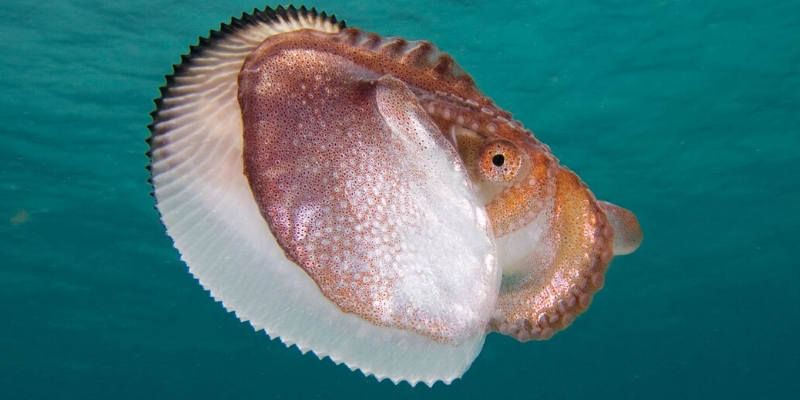
The Argonaut genus exhibits extreme sexual dimorphism, which means that the females of these species are much larger than the males, up to 30 times bigger to be precise. Also, whereas the males are semelparous, meaning that they mate only once and then die, the female Argonauts are iteroparous, meaning that they lay eggs multiple times during their lifetimes.
The Argonauts are also known as paper nautiluses because the shell of the female is as thin as a paper sheet.
The shell or eggcase is a feature that characterizes the female argonauts, as the males do not possess the ability to create eggcases with their dorsal tentacles. The female’s dorsal tentacles, on the other hand, secrete calcite from their tips. While most shells of other organisms consist of aragonite, the shells of argonauts consists of three layers of calcite, with a higher concentration of magnesium carbonate than other cephalopod shells.
Initially it was believed that Argonauts were not able to construct their own shells. Instead, they were thought to adopt shells abandoned by other organisms, similar to the hermit crab. Jeanne Villepreux-Power, also known as the mother of aquariums, was the first to experimentally prove in 1832 that Argonauts can produce their own eggcase. She did that by puncturing the shell and patiently wait until the females would begin to repair them. She was also the first one to observe how the Argonauts used the shell as a brood chamber by observing the octopuses during the fertilization and breeding season, from August to December.
The male arm which carries the sperm is known as hectocotylus and is detached from the male as soon as it is inserted in the female’s mantle cavity. Male Argonauts, unlike other male octopuses, have their third left arm hectocotylized instead of the third right one. The female Argonaut can store multiple hectocotyluses from different males and use them when she needs to fertilize her eggs. During the breeding period the female Argonaut triples the size of her shell to make enough space for the developing eggs.
There is one astonishing evolutionary theory regarding the existence of the eggcase. Once upon a time, there was a marine mollusk called ammonites. Most of the species of the ammonites became extinct because of the Cretaceous-Paleogene extinction event. Some scientists speculate that after their extinction, the female Argonauts used the ammonites’ shells to hide and lay their eggs. Gradually, according to these scientists, they became able to repair these shells and at the end produce their own.
Experiments have proved that the female Argonaut can not survive for a long period of time outside her shell.
—The Sailing Octopus—

The Argonauts, together with the Blanket Octopus, the Seven-Arm Octopus, and the Football Octopus are what we call pelagic octopuses, meaning that they inhabit the open sea.
But how do these small octopuses manage to travel across the vast oceans? It is again thanks to their very special thin shells that the Argonauts have mastered the sport of sailing.
Aristotle falsely believed that the Argonauts used their large pair of webbed dorsal arms as sails to float on the ocean’s surface. But the sailing ability of the Argonauts has to do with buoyancy, which is the upward force exerted by the water of the sea that opposes the weight of the octopus.
The eggcase of the female Argonaut contains bubbles of air, which at the beginning of the 20th century were thought to be life-threatening for the octopus. Since then, however, it has been proved that the Argonauts deliberately use these air bubbles to maintain their buoyancy. They use their funnels to direct the top of the shell towards the air in order to capture with their arms small amounts of air. Then, again with the help of the funnel, they roll over again until the captured bubbles of air eliminate their weight. In this way, the Argonaut stabilizes itself and can swim on the top of the sea surface. By releasing the trapped air, they can effectively control their movements in the water.
—Evolution Is Wise—
The Argonauts is a fascinating genus because it illustrates how some organisms evolve to acquire distinctive physical traits which can not be fully explained by scientists. Many theories exist as to why the Argonauts developed the ability to construct their shells. Once, it was believed that the shells were confining as they were hindering the movement of organisms. In the case of Argonauts, however, their shells evolved to help these octopuses win the fight of survival. They allowed them to expand their range into mid-depths, thus escaping predators lunging from above or those crawling on the sea floor. In addition, a mobile brood chamber means that the female is able to guard her eggs constantly and move them away from any potential threat. The shell, therefore, acts as a powerful protective mechanism.
—Riders Of The Seas—

Being a pelagic octopus must be pretty tiring…
Travelling across the oceans requires energy consumption. But energy is too high-priced and needs to be conserved. That’s probably the reason why female Argonauts like to ride on any floating object they might come across. Even if that object is a living jellyfish!
That’s right! Female Argonauts have been observed clinging to jellyfish, as well as seaweed and even to each other, forming a chain of up to 30 individuals! This means of transportation is actually safer than other, as the riders can use the jellyfish tentacles as weapons.
Using jellyfish as a shield against predators is also common among Blanket Octopuses and Seven-Arm Octopuses.









